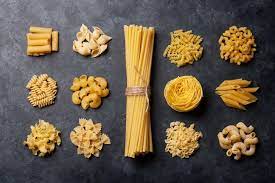Pasta is a beloved staple worldwide. It is used in many dishes throughout many different cultures. Pasta is cherished for its versatility, simplicity, and comforting appeal. Let’s explore the origins of pasta, the evolution of pasta, and its use in modern-day kitchens.
The exact origins of pasta are a mystery. However, evidence suggests that early cultures in Mesopotamia, China, and Egypt each had versions of pasta dishes. They used a mixture of grains and water to create their pasta.
The Romans had a major influence in shaping pasta as we know it today. The Romans are credited with creating a precursor to modern-day lasagna. Their dish was called, “lasa” It was layered pasta sheets consisting of various fillings. After the Roman Empire took over the Arabs conquered Sicily.
The Arabs introduced new pasta-making techniques. From Sicily pasta-making spread to Spain and eventually to other parts of Europe.
The Italian Renaissance pasta began to grow and became a staple of Italian cuisine. Pasta-makers in Italy perfected the art of pasta-making. They developed a wide variety of shapes and sizes to suit different sauces and dishes. This is when pasta became a major part of Italian culture. Major dishes like spaghetti alla carbonara and fettuccine alfredo gained popularity worldwide.
Italian immigrants brought their pasta-making traditions to the Americas. Pasta has now become a staple in the United States and Argentina.
While pasta-making is a very ancient art it continues to evolve today. Today gluten-free options are being created and chefs are experimenting with new ingredients to create more types of pasta.
The next time you eat a plate of spaghetti or ravioli take a moment to appreciate the rich history of pasta. The journey pasta took through time to become what we know and love.
